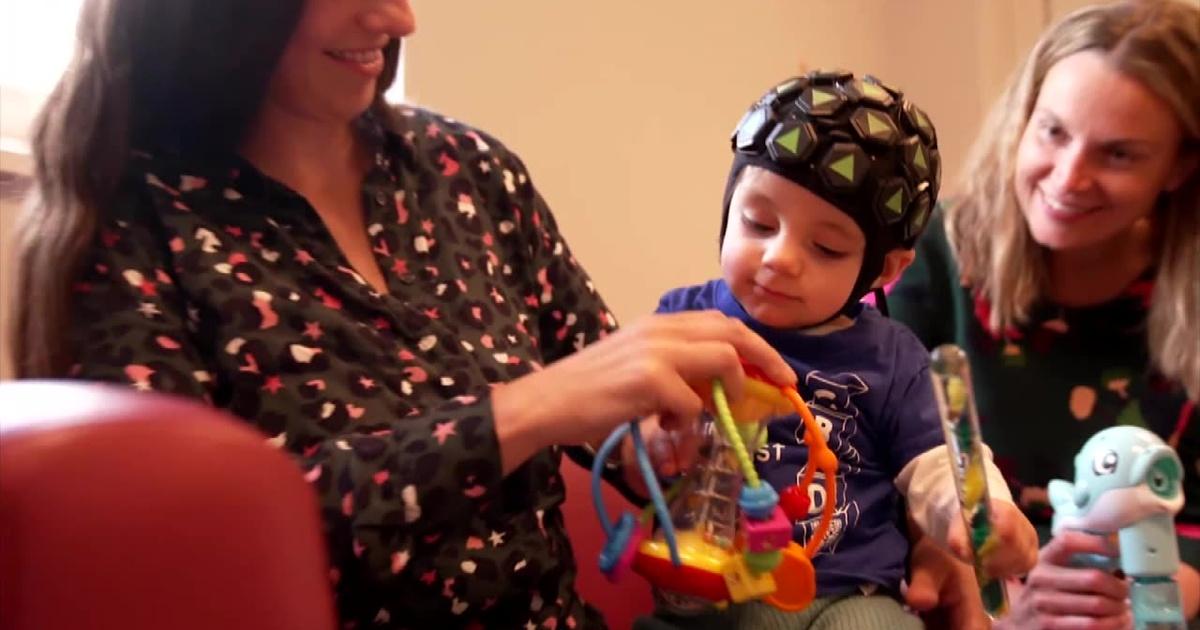Understanding Infant Behavior through Advanced Brain Imaging
When faced with a fussy baby, exhausted parents often wish for a window into their child’s mind. What could be troubling them? Are they hungry, tired, or perhaps experiencing discomfort? While verbal communication remains out of reach, breakthroughs in science are extending our understanding of infant behavior, offering fresh insights into the cognitive processes taking place in their tiny brains.
The Challenge of Interpreting Infant Emotions
Babies can’t articulate their thoughts or feelings, making it challenging for caregivers to decipher why they cry or fuss. Conventional methods for scanning brain activity in infants had significant limitations. Typical brain assessments required full sedation and were performed through MRI machines, which can be daunting for both parents and their little ones. Consequently, non-invasive and child-friendly techniques were long overdue.
Enter the Wearable Brain Imaging Device
Hoping to crack the code of baby behavior, scientists have developed a revolutionary wearable brain imaging device that resembles a cap. This innovative tool is designed to track cognitive functions by shining light into the infant’s brain and measuring the amount of light that reflects back. Each hexagon on the cap allows researchers to pinpoint areas of activity, providing a unique, real-time map of brain functions without distressing or sedating the child.
Insights Gained from Cognitive Mapping
Research has shown that even at a young age, babies exhibit significant emotional intelligence, with brain activity reflecting their responses to social stimuli. By comparing brain activity levels when infants are engaged with other people versus when they are focused on inanimate objects, scientists discovered activated areas in the prefrontal cortex during social interactions. This suggests that babies as young as five months are capable of complex cognitive processing, highlighting the importance of social interaction in their development.
The Power of Social Stimulation
One of the most intriguing findings is how social situations stimulate brain activity more than simple toys or inanimate objects. Observations confirm that a baby’s brain lights up when they watch people singing or conversing, underscoring the role of these interactions in emotional and cognitive development. Parents may intuitively sense that their baby is more engaged during these moments; now, scientific methods offer concrete data to support this belief.
Broadening the Scope of Research
As the technology matures, scientists aim to use this wearable cap on infants as young as one month old, mapping brain activity across different developmental stages and conditions. Future research could diversify the understanding of cognitive and emotional responses in early childhood. This could be especially valuable for families with a history of autism or ADHD, allowing for early intervention and tailored support.
Future Potential of Wearable Brain Imaging
The prospects for this ground-breaking technology are immense. Beyond merely understanding why babies cry, it holds the potential for identifying early signs of developmental disorders like autism and ADHD. Early detection could lead to timely interventions that can significantly alter a child’s developmental trajectory. While the researchers caution that there are no guarantees, the opportunities for improving infant development and parental support are radically expanding.
The Excitement of New Discoveries
Every day, researchers are eager to delve deeper into the mysteries of the infant brain. As this wearable technology evolves, it could become an indispensable tool for understanding not just the emotional responses of babies but also their developmental needs. Continuous advancements in this area mean that struggles like sleepless nights might one day come with clearer answers and actionable guidance for tired parents. This innovation represents a profound step towards demystifying the early stages of human cognition and emotional development.
A New Era in Parenting and Child Development
Ultimately, these scientific advancements could transform the parenting experience, making it possible for parents to gain insights about their child’s cognitive and emotional health. By enabling us to understand what’s going on in a baby’s brain during critical developmental months, science is paving the way for a future where families are better supported, and where children can flourish with the understanding and care they need during their earliest years.
